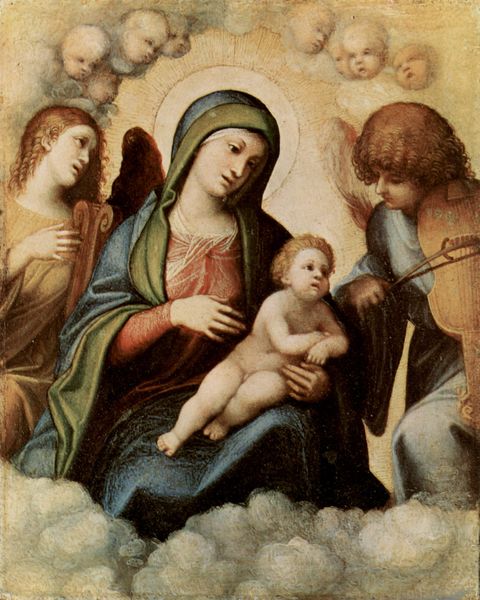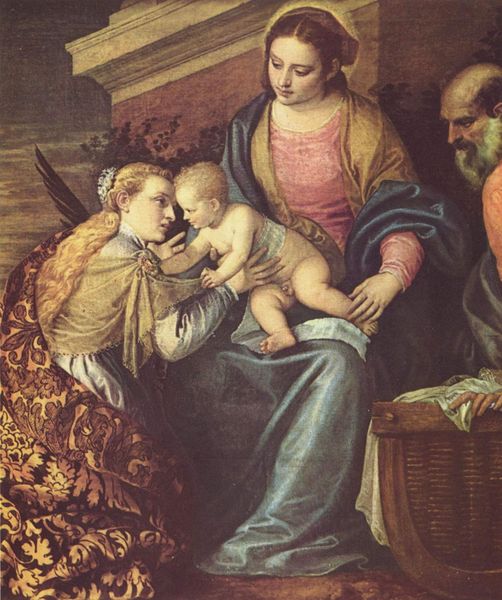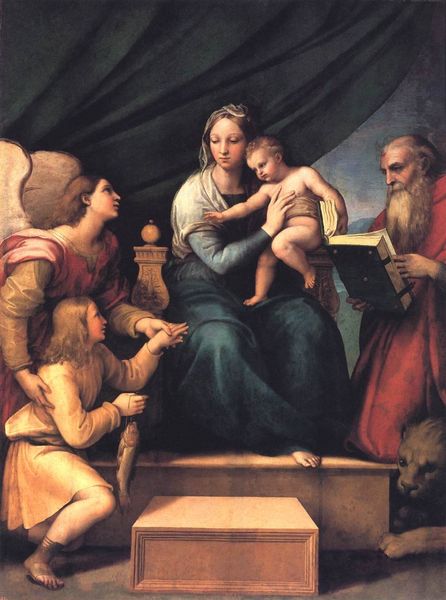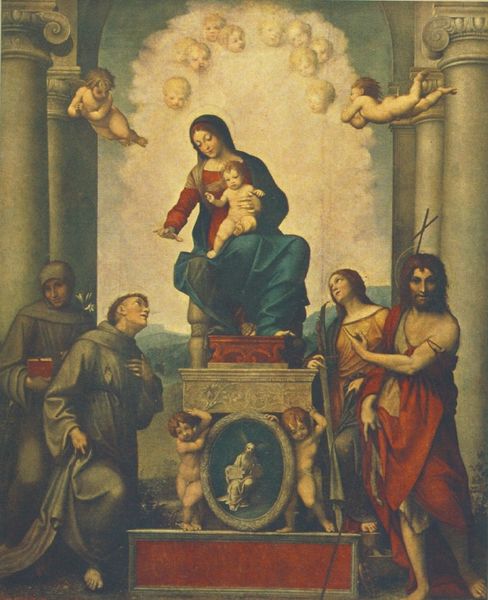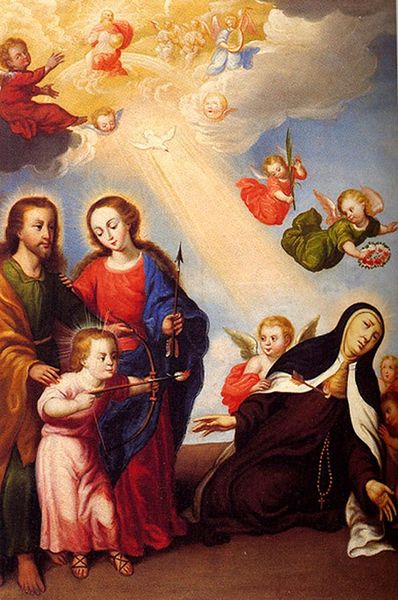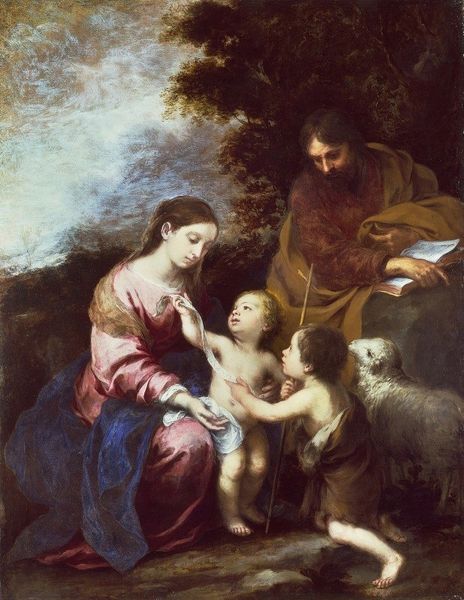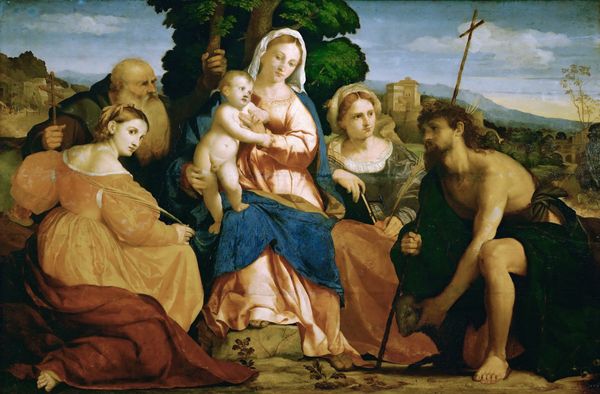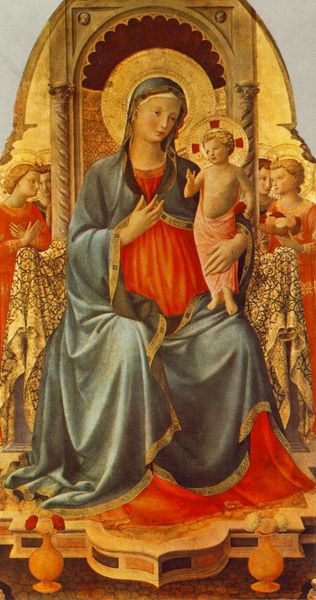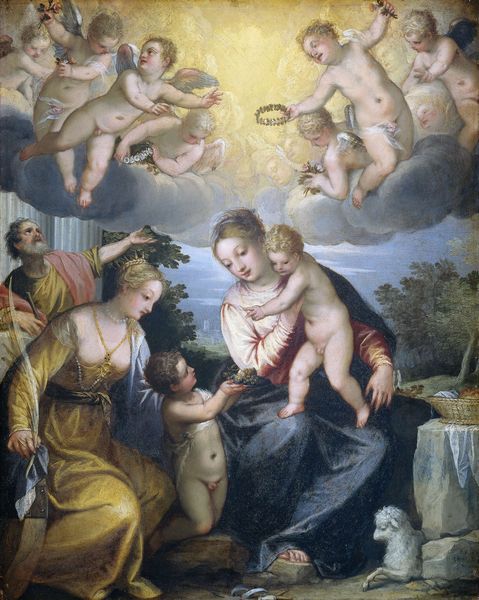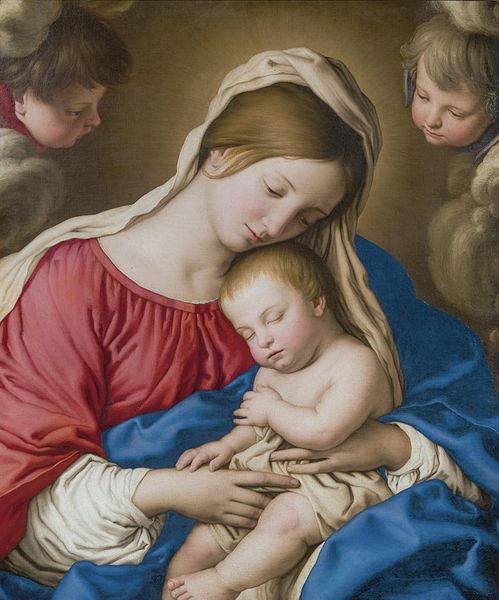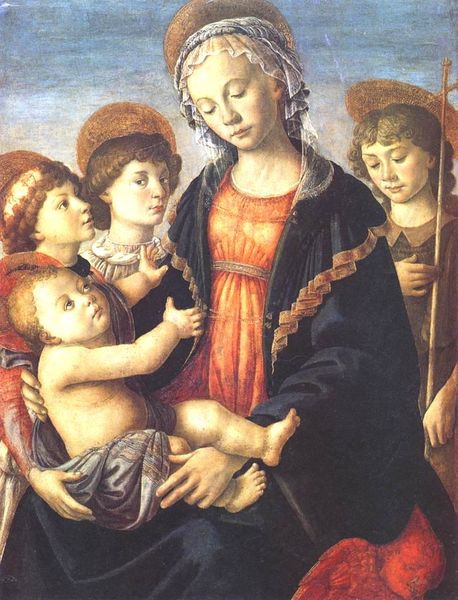
painting, oil-paint
#
portrait
#
high-renaissance
#
painting
#
oil-paint
#
oil painting
#
history-painting
#
italian-renaissance
Copyright: Public Domain: Artvee
Raphael painted The Sistine Madonna using oil on canvas, a venerable technique that had reached a peak of refinement in the Renaissance. Consider the way the artist’s hand is evident in the blending of colors, and the modulation of light and shadow. Look closely, and you will see the complex process of layering and glazing, built upon a foundation of careful drawing. Raphael would have employed assistants to prepare his pigments, grinding them from raw minerals and mixing them with oil, a skilled job that was crucial to achieving the desired effects. Think, too, of the canvas itself, woven from flax, stretched, and primed with gesso. Each stage of its production, from the field to the studio, involved human labor, and was the product of a complex economic system. The painting isn’t just an image; it's a material record of skilled work, and a testament to the power of human ingenuity. So, the next time you look at a painting, remember to consider not just what it represents, but also how it was made.
Comments
Join the conversation
Join millions of artists and users on Artera today and experience the ultimate creative platform.
